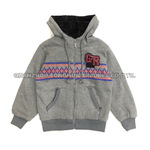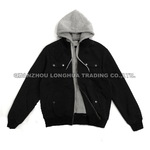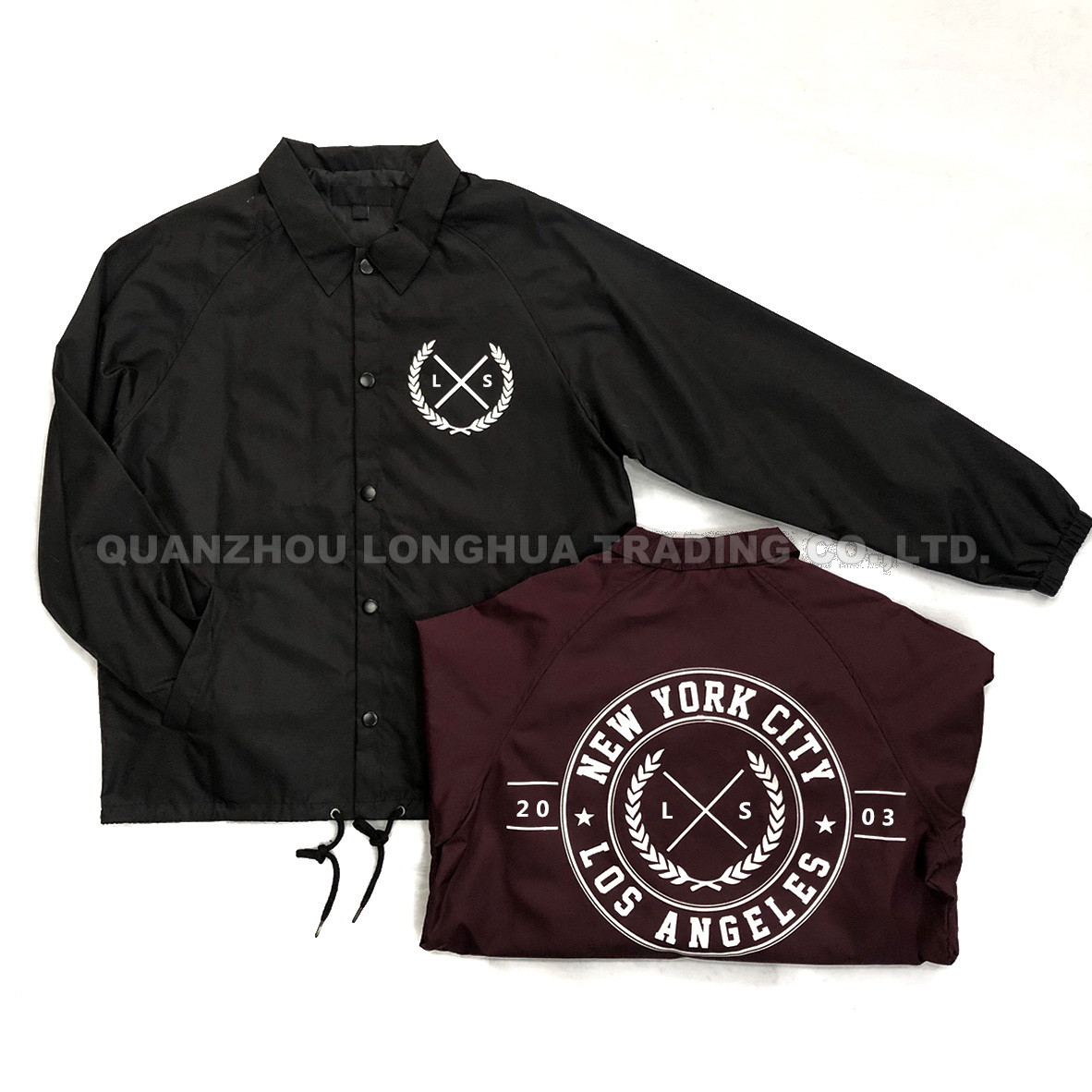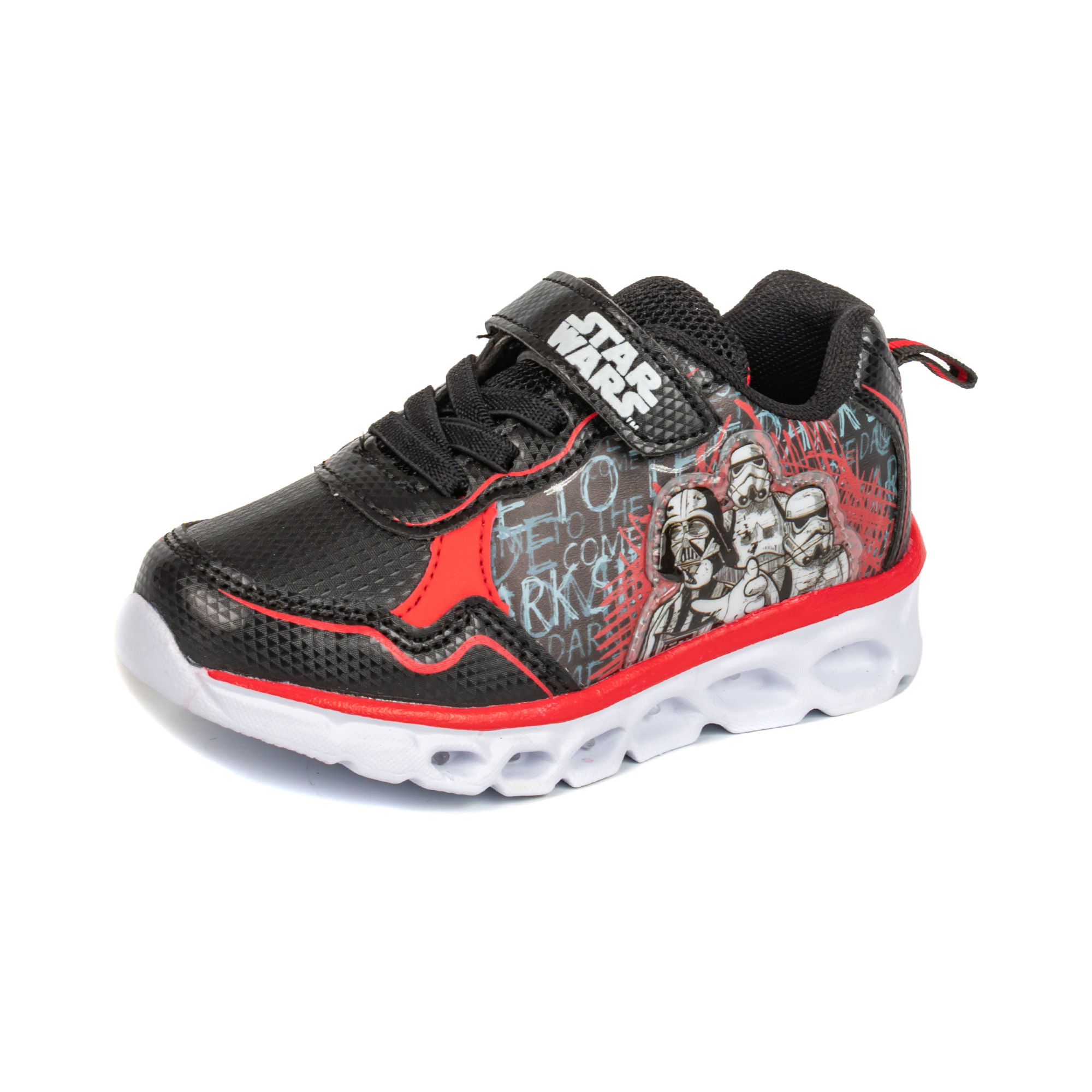News
Super complete: T-shirt fabric knowledge that clothing people must understand
- Categories:NEWS
- Author:
- Origin:
- Time of issue:2021-12-27
- Views:0
(Summary description)1. What is the weight
The input weight here is generally used to indicate the thickness of the fabric, the greater the weight, the thicker the clothes. The weight of a T-shirt is generally between 160 grams and 220 grams. Too thin will be very transparent, and too thick will be stuffy. Generally, it is better to choose between 180-280 grams. (Short-sleeved T-shirts are generally based on 180-220 grams. This thickness is just right to wear. Long-sleeved T-shirts generally choose 260 grams of fabric, which is a thicker type.
2. What is the count?
Enter the definition here: the length code number of the cotton yarn with a nominal weight of one pound. Coarse count yarn: pure cotton yarn with 18 counts or less, mainly used for weaving thick fabrics or piled looped cotton fabrics. Middle count yarn: 19-29 count pure cotton yarn. Mainly used for knitted garments with general requirements. Fine yarn: pure cotton yarn with 30-60 counts. Mainly used for high-grade knitted cotton fabrics. The higher the count, the softer the T-shirts are generally 21 and 32.
3. What is combing?
The T-shirt cotton yarn input here can be divided into carded and combed yarns. Carded yarn: refers to the yarn spun by the carded spinning process, also called uncombed yarn. Combed yarn: refers to the yarn produced by using high-quality cotton fiber as the raw material and adding a combing process to that of carded yarn during spinning. The surface of the fabric is relatively neat, and the hand feels very soft.
4. What are the processes for T-shirt printing?
The T-shirt printing input here is basically divided into screen printing and transfer printing. Screen printing: The technology is relatively complex, mainly including design, film production, printing, printing, and drying steps. The advantages of screen printing are high color fastness, durability and washability. The screen printing plate-making cost is relatively high, so mass production is required to reduce the cost, and it cannot meet the printing of single or very small batches. Transfer printing: also known as heat transfer. The advantages are bright color and simple technology. The disadvantage is that the pattern has poor durability, is not resistant to abrasion, and is not resistant to washing.
5. What is singeing treatment?
The characteristic of the input singeing treatment is to remove the fluff formed on the surface of the yarn due to the unwound fiber and the protruding fiber, making the fabric more smooth and beautiful, and the color of the fabric is uniform, and it can print clear and fine patterns.
6. What are the advantages of pure cotton fabrics? Why add spandex?
The characteristic of the pure cotton fabric entered here is that it feels good, comfortable to wear and environmentally friendly, but it is easy to wrinkle. Adding a small amount of spandex yarn can significantly change the physical properties of the fabric, greatly increase the elasticity of the fabric, while maintaining the texture and comfort of pure cotton. In addition, adding spandex to the neckline can prevent the neckline from becoming loose and deformed and maintain the lasting elasticity of the neckline.
How many types of T-shirt fabrics are there, let's talk about it below:
1. Ordinary cotton fabric
Casual T-shirts are mostly made of ordinary pure cotton fabrics. T-shirts of this fabric are comfortable to wear, but slightly less crisp. It is easy to wrinkle and deform after entering the water.
2. The mercerized cotton fabric is made of ordinary pure cotton fabric, the T-shirt of this fabric is comfortable to wear
The mercerized cotton fabric is made of cotton as the raw material, which is made into high-woven yarn by worsted spinning, and then is made into a smooth, bright, soft and wrinkle-resistant high-quality mercerized yarn through special processing procedures such as singeing and mercerizing. The high-quality knitted fabric made of this raw material not only completely retains the excellent natural characteristics of raw cotton, but also has a silky luster. The fabric feels soft, absorbs moisture and breathes, and has good elasticity and drape. In addition, it is rich in colors and comfortable to wear. And casual, it fully reflects the temperament and taste of the wearer.
3. Pure cotton double mercerized fabric
Pure cotton double mercerized fabric is a "double burnt double silk" pure cotton product. It uses singeed and mercerized mercerized yarn as raw material, and uses CAD computer-aided design system and CAM computer-aided production system to quickly weave designs After singeing and mercerizing the grey fabric again, the high-end knitted fabric is produced after a series of finishings. The fabric surface is clear, the pattern is novel, the luster is bright, and the hand feels smooth, which is better than mercerized cotton. First, but because of two mercerizing finishing, the price is slightly more expensive.
4. Ultra-high count yarn pure cotton fabric
This kind of fa
Super complete: T-shirt fabric knowledge that clothing people must understand
(Summary description)1. What is the weight
The input weight here is generally used to indicate the thickness of the fabric, the greater the weight, the thicker the clothes. The weight of a T-shirt is generally between 160 grams and 220 grams. Too thin will be very transparent, and too thick will be stuffy. Generally, it is better to choose between 180-280 grams. (Short-sleeved T-shirts are generally based on 180-220 grams. This thickness is just right to wear. Long-sleeved T-shirts generally choose 260 grams of fabric, which is a thicker type.
2. What is the count?
Enter the definition here: the length code number of the cotton yarn with a nominal weight of one pound. Coarse count yarn: pure cotton yarn with 18 counts or less, mainly used for weaving thick fabrics or piled looped cotton fabrics. Middle count yarn: 19-29 count pure cotton yarn. Mainly used for knitted garments with general requirements. Fine yarn: pure cotton yarn with 30-60 counts. Mainly used for high-grade knitted cotton fabrics. The higher the count, the softer the T-shirts are generally 21 and 32.
3. What is combing?
The T-shirt cotton yarn input here can be divided into carded and combed yarns. Carded yarn: refers to the yarn spun by the carded spinning process, also called uncombed yarn. Combed yarn: refers to the yarn produced by using high-quality cotton fiber as the raw material and adding a combing process to that of carded yarn during spinning. The surface of the fabric is relatively neat, and the hand feels very soft.
4. What are the processes for T-shirt printing?
The T-shirt printing input here is basically divided into screen printing and transfer printing. Screen printing: The technology is relatively complex, mainly including design, film production, printing, printing, and drying steps. The advantages of screen printing are high color fastness, durability and washability. The screen printing plate-making cost is relatively high, so mass production is required to reduce the cost, and it cannot meet the printing of single or very small batches. Transfer printing: also known as heat transfer. The advantages are bright color and simple technology. The disadvantage is that the pattern has poor durability, is not resistant to abrasion, and is not resistant to washing.
5. What is singeing treatment?
The characteristic of the input singeing treatment is to remove the fluff formed on the surface of the yarn due to the unwound fiber and the protruding fiber, making the fabric more smooth and beautiful, and the color of the fabric is uniform, and it can print clear and fine patterns.
6. What are the advantages of pure cotton fabrics? Why add spandex?
The characteristic of the pure cotton fabric entered here is that it feels good, comfortable to wear and environmentally friendly, but it is easy to wrinkle. Adding a small amount of spandex yarn can significantly change the physical properties of the fabric, greatly increase the elasticity of the fabric, while maintaining the texture and comfort of pure cotton. In addition, adding spandex to the neckline can prevent the neckline from becoming loose and deformed and maintain the lasting elasticity of the neckline.
How many types of T-shirt fabrics are there, let's talk about it below:
1. Ordinary cotton fabric
Casual T-shirts are mostly made of ordinary pure cotton fabrics. T-shirts of this fabric are comfortable to wear, but slightly less crisp. It is easy to wrinkle and deform after entering the water.
2. The mercerized cotton fabric is made of ordinary pure cotton fabric, the T-shirt of this fabric is comfortable to wear
The mercerized cotton fabric is made of cotton as the raw material, which is made into high-woven yarn by worsted spinning, and then is made into a smooth, bright, soft and wrinkle-resistant high-quality mercerized yarn through special processing procedures such as singeing and mercerizing. The high-quality knitted fabric made of this raw material not only completely retains the excellent natural characteristics of raw cotton, but also has a silky luster. The fabric feels soft, absorbs moisture and breathes, and has good elasticity and drape. In addition, it is rich in colors and comfortable to wear. And casual, it fully reflects the temperament and taste of the wearer.
3. Pure cotton double mercerized fabric
Pure cotton double mercerized fabric is a "double burnt double silk" pure cotton product. It uses singeed and mercerized mercerized yarn as raw material, and uses CAD computer-aided design system and CAM computer-aided production system to quickly weave designs After singeing and mercerizing the grey fabric again, the high-end knitted fabric is produced after a series of finishings. The fabric surface is clear, the pattern is novel, the luster is bright, and the hand feels smooth, which is better than mercerized cotton. First, but because of two mercerizing finishing, the price is slightly more expensive.
4. Ultra-high count yarn pure cotton fabric
This kind of fa
- Categories:NEWS
- Author:
- Origin:
- Time of issue:2021-12-27
- Views:0
1. What is the weight
The input weight here is generally used to indicate the thickness of the fabric, the greater the weight, the thicker the clothes. The weight of a T-shirt is generally between 160 grams and 220 grams. Too thin will be very transparent, and too thick will be stuffy. Generally, it is better to choose between 180-280 grams. (Short-sleeved T-shirts are generally based on 180-220 grams. This thickness is just right to wear. Long-sleeved T-shirts generally choose 260 grams of fabric, which is a thicker type.
2. What is the count?
Enter the definition here: the length code number of the cotton yarn with a nominal weight of one pound. Coarse count yarn: pure cotton yarn with 18 counts or less, mainly used for weaving thick fabrics or piled looped cotton fabrics. Middle count yarn: 19-29 count pure cotton yarn. Mainly used for knitted garments with general requirements. Fine yarn: pure cotton yarn with 30-60 counts. Mainly used for high-grade knitted cotton fabrics. The higher the count, the softer the T-shirts are generally 21 and 32.
3. What is combing?
The T-shirt cotton yarn input here can be divided into carded and combed yarns. Carded yarn: refers to the yarn spun by the carded spinning process, also called uncombed yarn. Combed yarn: refers to the yarn produced by using high-quality cotton fiber as the raw material and adding a combing process to that of carded yarn during spinning. The surface of the fabric is relatively neat, and the hand feels very soft.
4. What are the processes for T-shirt printing?
The T-shirt printing input here is basically divided into screen printing and transfer printing. Screen printing: The technology is relatively complex, mainly including design, film production, printing, printing, and drying steps. The advantages of screen printing are high color fastness, durability and washability. The screen printing plate-making cost is relatively high, so mass production is required to reduce the cost, and it cannot meet the printing of single or very small batches. Transfer printing: also known as heat transfer. The advantages are bright color and simple technology. The disadvantage is that the pattern has poor durability, is not resistant to abrasion, and is not resistant to washing.
5. What is singeing treatment?
The characteristic of the input singeing treatment is to remove the fluff formed on the surface of the yarn due to the unwound fiber and the protruding fiber, making the fabric more smooth and beautiful, and the color of the fabric is uniform, and it can print clear and fine patterns.
6. What are the advantages of pure cotton fabrics? Why add spandex?
The characteristic of the pure cotton fabric entered here is that it feels good, comfortable to wear and environmentally friendly, but it is easy to wrinkle. Adding a small amount of spandex yarn can significantly change the physical properties of the fabric, greatly increase the elasticity of the fabric, while maintaining the texture and comfort of pure cotton. In addition, adding spandex to the neckline can prevent the neckline from becoming loose and deformed and maintain the lasting elasticity of the neckline.
How many types of T-shirt fabrics are there, let's talk about it below:
1. Ordinary cotton fabric
Casual T-shirts are mostly made of ordinary pure cotton fabrics. T-shirts of this fabric are comfortable to wear, but slightly less crisp. It is easy to wrinkle and deform after entering the water.
2. The mercerized cotton fabric is made of ordinary pure cotton fabric, the T-shirt of this fabric is comfortable to wear
The mercerized cotton fabric is made of cotton as the raw material, which is made into high-woven yarn by worsted spinning, and then is made into a smooth, bright, soft and wrinkle-resistant high-quality mercerized yarn through special processing procedures such as singeing and mercerizing. The high-quality knitted fabric made of this raw material not only completely retains the excellent natural characteristics of raw cotton, but also has a silky luster. The fabric feels soft, absorbs moisture and breathes, and has good elasticity and drape. In addition, it is rich in colors and comfortable to wear. And casual, it fully reflects the temperament and taste of the wearer.
3. Pure cotton double mercerized fabric
Pure cotton double mercerized fabric is a "double burnt double silk" pure cotton product. It uses singeed and mercerized mercerized yarn as raw material, and uses CAD computer-aided design system and CAM computer-aided production system to quickly weave designs After singeing and mercerizing the grey fabric again, the high-end knitted fabric is produced after a series of finishings. The fabric surface is clear, the pattern is novel, the luster is bright, and the hand feels smooth, which is better than mercerized cotton. First, but because of two mercerizing finishing, the price is slightly more expensive.
4. Ultra-high count yarn pure cotton fabric
This kind of fabric is rarely used by companies, because its price is very expensive. The price of 120-thread cotton T-shirt fabric is as high as 170 yuan per kilogram, while the price of 200-thread cotton T-shirt fabric is even higher, reaching more than 3000. One kilogram, and the 250-count cotton T-shirt fabric requires 1,800 pounds, and our country does not have the technology to produce this fabric.
Commonly used fabrics for making T-shirts and cultural shirts
Pure cotton jersey, polyester-cotton single-sided, pure cotton, polyester-cotton hexagonal, four-corner mesh, herringbone pattern, composite ribbing, stripe mesh, etc. It is not easy to deform, but the wearing comfort is slightly worse than that of pure cotton.
The characteristics of common polyester-cotton fabrics: soft and thick to the touch, not easy to deform when washing, but the wearing comfort is slightly worse than that of pure cotton. Common polyester-cotton is 80% cotton, 20% polyester or 65% cotton, 35% polyester.
The characteristics of pure cotton fabric: good hand feel, comfortable and environmentally friendly to wear, the weight is generally between 160 grams and 300 grams, too thin will be very transparent, too thick will be stuffy, generally choose between 180-260 grams, the number of counts Generally 21 counts and 32 counts, which refer to the average number of cotton fiber length, the higher the softer, and the veil is divided into normal yarn, semi-finished yarn and fine yarn. The surface of normal yarn fabrics will be rougher, especially darker. The fabric will have white yarn points. The surface of the fine yarn fabric is relatively neat and soft to the touch.
2. Common sense of washing all kinds of T-shirts
Printed T-shirt
1. The printing position cannot be pulled, rubbed or twisted.
2. Do not iron the printing position to prevent the printing from falling off.
3. The rib fabric has good elasticity, and the printing position is easy to fall off when it is pulled too much.
Stretch T-shirt
1. The elastic fabric should not be ironed at high temperature to prevent damage to the elasticity of the fabric
2. Don't wander, it will damage the elasticity of the fabric
3. Some elastic fabrics are woven with core-spun yarn. The yarn is fluffy and the cloth surface is more plush. Be careful not to be too heavy when washing to prevent excessive fuzzing
4. Do not expose to the sun to prevent damage to the elasticity of the fabric
Lightweight cotton T-shirt
1. Do not wash too heavy, do not wash with other thick clothes, to prevent deformation, excessive fuzzing and scratches, abrasions, it is best to wash separately
2. Lightweight fabrics have a thinner structure and low fabric elasticity. When wearing Nissan, pay attention to prevent hard objects from hooking and causing holes.
3. The thin and light fabric is easy to deform, so be careful not to pull it too much when wearing it
Other fabric T-shirts
1. Because the jacquard fabric is loosely organized and there are long floating lines on the reverse side of the fabric, try not to wash it with other thick clothes or clothes with zippers to prevent scratches and scratches on the fabric. Because the floating thread is on the reverse side, this type of clothing Don't wash the backside
2. Viscose knitted fabrics (such as modal-more women's clothing), soft to the touch, lighter and thinner, this kind of fabric has low wet strength and is prone to fibrillation and fluffing in water, so it can only be machine washed gently and not too heavy.
Three, different fabrics and different colors of clothes have different drying techniques
Silk fabric clothing: After washing, it should be placed in a cool and ventilated place to dry naturally, and it is best to face outwards. Because silk garments have poor sunlight resistance, they cannot be exposed to direct sunlight, otherwise the fabric will fade and the strength will decrease. This is especially true for clothing with darker or brighter colors. In addition, do not use fire to bake silk garments.
Chemical fiber fabric clothes: Chemical fiber clothes should not be exposed to sunlight after washing. Because acrylic fiber is easy to change color and yellow after exposure; nylon, polypropylene and man-made fibers are easy to age when exposed to sunlight; polyester and Weilun will accelerate the photochemical pyrolysis of fibers under the action of sunlight and affect the life of the fabric. Therefore, it is better to dry chemical fiber clothes in the shade.
Knitted fabrics such as sweaters and sweaters: In order to prevent this kind of clothes from deforming, you can put them in a net bag after washing and hang them in a ventilated place to dry; or hang them on two hangers when drying to avoid overhanging. It is heavy and deformed; it can also be stringed up with bamboo poles or plastic pipes to dry; if possible, it can be laid flat on other objects to dry. In short, avoid exposure or baking.
Scan the QR code to read on your phone
Related Reading
Leave a Message
Contact us















